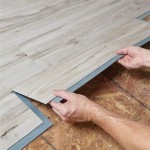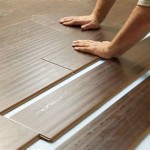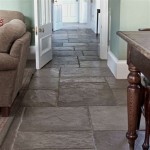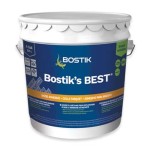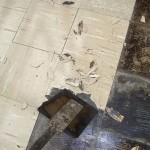Can You Put Vinyl Flooring On Bathroom Walls? Exploring the Potential and Considerations
Vinyl flooring, typically associated with underfoot surfaces, is increasingly being considered as a wall covering, particularly in environments prone to moisture, such as bathrooms. This article explores the feasibility of using vinyl flooring on bathroom walls, examining the advantages, disadvantages, installation requirements, and key factors to consider before undertaking such a project. Understanding the proper application and limitations is crucial for achieving a successful and aesthetically pleasing outcome.
The appeal of using vinyl flooring on bathroom walls stems from its inherent properties. Vinyl is naturally water-resistant, making it a potentially suitable solution for bathrooms where water splashes and humidity are prevalent. Furthermore, vinyl flooring comes in a diverse range of styles, patterns, and textures, allowing for considerable design flexibility. This versatility can enable homeowners to achieve a specific aesthetic without the cost and maintenance associated with traditional materials like tile or natural stone.
However, using vinyl flooring on walls is not without its challenges. The suitability of this application depends heavily on the type of vinyl flooring, the existing wall surface, and the quality of the installation. Ignoring these factors can lead to issues like peeling, bubbling, mold growth, and a generally unsatisfactory appearance.
Key Point 1: Types of Vinyl Flooring Suitable for Walls
The most common types of vinyl flooring are sheet vinyl, vinyl tiles, and luxury vinyl planks (LVP). While all are ostensibly water-resistant, not all are equally suitable for wall application. Sheet vinyl, due to its seamless nature, offers the best protection against water intrusion, making it a strong contender for bathroom walls. Its large size also minimizes the number of seams where water could potentially seep behind the material.
Vinyl tiles, particularly peel-and-stick varieties, are often less suitable for bathroom walls. The numerous seams between individual tiles provide ample opportunity for water to penetrate. While grouted vinyl tiles offer improved water resistance, they still require careful installation to ensure a watertight barrier.
Luxury Vinyl Planks (LVP) can be used on walls, especially if they have a click-lock system that creates tight seams. However, the added thickness and weight of LVP compared to sheet vinyl can make installation more challenging and may require additional adhesive or mechanical fasteners to ensure proper adhesion to the wall. Furthermore, some LVP products may not be designed for vertical application, potentially affecting their long-term performance.
Ultimately, the specific type of vinyl flooring chosen should be explicitly approved by the manufacturer for wall application. Checking the product specifications and installation guidelines is crucial. Some specialized vinyl wall panels are designed specifically for this purpose, offering enhanced durability and ease of installation.
Key Point 2: Preparing the Wall Surface
Proper wall preparation is paramount for a successful vinyl flooring installation. The surface must be clean, dry, smooth, and structurally sound. Any existing paint, wallpaper, or loose debris must be completely removed. Uneven surfaces should be leveled with a suitable patching compound and sanded smooth. A primer designed for use with vinyl adhesives is generally recommended to promote adhesion and prevent moisture migration from the wall into the vinyl.
For walls prone to moisture infiltration, a moisture barrier membrane may be necessary beneath the vinyl flooring. This membrane helps prevent water from seeping into the wall cavity and causing mold or mildew growth. The type of moisture barrier required depends on the wall construction and the potential for water exposure. Consultation with a building professional is recommended to determine the appropriate solution.
If the wall is constructed of drywall, it should be thoroughly inspected for any signs of water damage or mold. Damaged drywall must be replaced before installing vinyl flooring. Applying a mold-resistant primer to the drywall before installing the vinyl can further enhance protection against moisture issues. Using a suitable backer board for high-moisture areas, such as around showers or tubs, can provide an even more durable and water-resistant substrate.
In cases where the existing wall surface is textured, it may be necessary to skim coat the wall with a joint compound to create a smooth, uniform surface. This process involves applying a thin layer of compound over the entire wall and sanding it smooth once dry. This step ensures that the vinyl flooring adheres properly and that the surface appearance is not compromised by underlying imperfections.
Key Point 3: Installation Techniques and Adhesives
The installation method for vinyl flooring on walls differs significantly from that used for floors. While some peel-and-stick products exist, a more robust adhesive is typically required to ensure long-term adhesion, especially in humid environments like bathrooms. Using an adhesive specifically designed for vinyl flooring and approved for vertical application is critical.
The adhesive should be applied evenly to the back of the vinyl flooring according to the manufacturer's instructions. Proper ventilation is important during the adhesive application process to avoid inhaling harmful fumes. Once the adhesive is applied, the vinyl sheet or planks should be carefully positioned on the wall and pressed firmly into place. Using a roller or hand pressure can help ensure a strong bond between the vinyl and the wall surface.
For larger vinyl sheets, it may be necessary to use temporary supports to hold the material in place while the adhesive cures. These supports can be removed once the adhesive has fully dried. When installing multiple panels, ensure that seams are aligned properly and sealed with a waterproof sealant to prevent water intrusion.
Cutting the vinyl flooring to fit around fixtures, such as pipes and outlets, requires careful measurement and precision. Using a sharp utility knife or specialized vinyl cutting tool is essential for achieving clean, professional-looking cuts. It may be beneficial to create templates for complex cuts to minimize errors. Once the vinyl is installed, apply a bead of caulk along the edges where it meets the ceiling, floor, or other surfaces to create a watertight seal.
Consider the weight of the vinyl flooring when selecting an adhesive. Heavier vinyl products, such as LVP, require a stronger adhesive and may necessitate additional mechanical fasteners, such as nails or staples, to prevent the material from sagging or detaching from the wall. Consult with a professional installer or the adhesive manufacturer for specific recommendations based on the type of vinyl flooring being used.
Properly ventilating the bathroom after installation is also crucial to allow the adhesive to cure fully and to dissipate any lingering odors. Avoid exposing the newly installed vinyl flooring to excessive moisture or temperature fluctuations during the curing process.
In conclusion, while using vinyl flooring on bathroom walls can be a viable option for achieving a water-resistant and aesthetically pleasing finish, it requires careful planning, preparation, and execution. Selecting the appropriate type of vinyl flooring, thoroughly preparing the wall surface, and employing proper installation techniques are all critical factors for success. Consulting with a qualified installer or contractor is recommended, especially for complex projects or when dealing with pre-existing moisture issues.

Can You Use Vinyl Flooring On Bathroom Walls Rustic Remodel Lighting Diy

Vinyl Floor On The Wall Turn 90 Degrees Choose Diffe Way Live Flooring Bathroom Tile Plank

Best Bathroom Flooring Options

Can You Install Vinyl Flooring On Walls L Antic Colonial

Installed Vinyl Plank Flooring On My Bathroom Wall Love The Texture Color Walls

How To Install Vinyl Plank Flooring In A Bathroom Fixthisbuildthat

Bathroom Makeover Blogger Vs Builder Grade East Coast Creative

Installing Waterproof Vinyl Flooring On Shower Walls Bathroom Design Inspiration Wall

Vinyl Planks In Bathrooms Residential Inspiration Flooring

Bathroom Shower Vinyl Wall Panel Vs Tiles Which One Should You Choose Step Guard Floors
Related Posts

